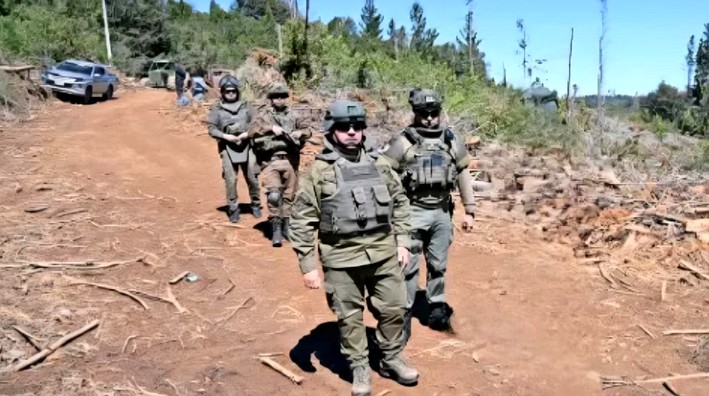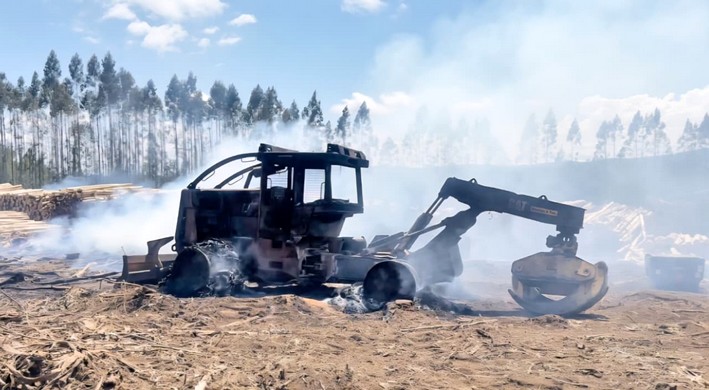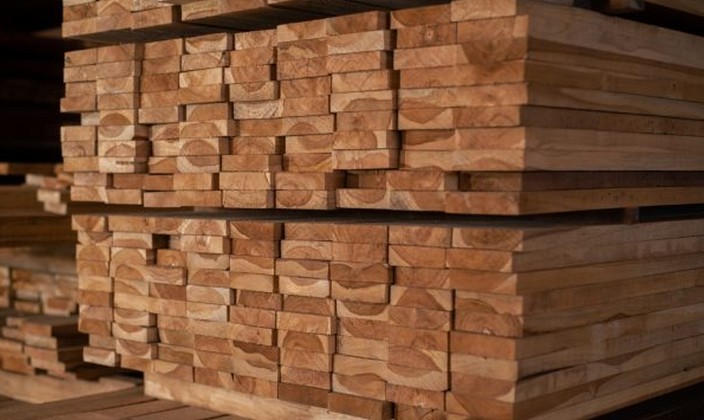Forest Production and Environment Laboratory
The LPFMA is conducting applied research to utilize forest products while reducing environmental impact and integrating ecological, economic, and engineering concepts.
Dr. Marco Contreras is the academic from the Universidad Austral de Chile in charge, with whom we discussed the projects being developed and his comparative perspective on the Chilean forestry industry.
Lately, there has been much talk about supporting science and research as fundamental pillars of development and growth for a country whose economy is based on commodities. This support translates into funding, and in Chile, there are two options: state funding through competitive grants and private funding from companies. The Forest Production and Environment Laboratory of the Universidad Austral de Chile (UACH) appeals to both forms to carry out various research lines for the sector.
Marco Contreras is a Forestry Engineer who began a Master's and later a Ph.D. at the University of Montana, USA, in 2004. He was an academic at the University of Kentucky and a specialized professor in forest operations, focusing on the efficient management of productive practices related to environmental sustainability. In 2019, he returned to Chile, joining the Institute of Forests and Society at the Universidad Austral, leading this research space, which also includes a Forestry Engineer, a Computer Engineer, and a Forestry Engineering student. Building this team has not been easy due to setbacks caused by the social unrest and later the pandemic.
Currently, three projects are being developed at the LPFMA. "Together with the company Arauco, we are developing a tool called LADERA to simulate productivity and operation times for steep-slope harvesting, using mechanized assisted felling (shovel) and a yarder with a grapple carriage. We are also collaborating on the economic evaluation of a project funded by CORFO called 'Adaptation to Climate Change in Forestry: Productivity and Impact Reduction.' Lastly, we are working on a project for designing extraction trails, which we submitted to the Fund for the Promotion of Scientific and Technological Development (FONDEF). Although it was placed on a waiting list, we will resubmit it with the necessary corrections," explains Marco Contreras.
The latter project aims to develop a tool to automate the design of extraction trails used by ground equipment in forests, minimizing logging costs and soil impacts. "In the forestry industry, there is no operational tool for designing optimized extraction trails, and our goal is to work with forestry companies and contractors to jointly develop such tools. What stands out is how it combines two areas of action: productivity and environmental protection. In this effort, the two largest forestry companies are collaborating and willing to co-finance it."
"We have the idea of working with Forestry Contractors to better characterize forest service companies, identify levels of technological advancement and productivity, and most importantly, future work lines and needs where our research group can provide support. That challenge remains pending."
Regarding applied research useful for the productive sector, Contreras explains that a common approach is collaborating with large landowners and companies because they have the capacity to fund projects, which usually aim to solve specific problems. "Due to scale, working directly with contracting companies is less frequent, though they have many needs to address. The challenge lies in working with the entire sector, such as ACOFORAG, to identify common problems and deliver operationally applicable solutions."
Based on your experience and training in other countries, how do you view the national forestry sector?
The main thing I’ve noticed since my return is that Chile has a highly productive, high-level forestry sector, but I see few instances of collaboration between academia and the sector, specifically in forest operations. Clearly, this is something we want to change. There is a huge opportunity for work and collaboration. The forestry sector needs it—it needs tools from academia that solve real problems for contractors and landowners.
It’s not easy to compare one country to another because they have different realities. For example, in the U.S., several regions are characterized by their forest types, and the related forestry industry varies accordingly. The Southeast is dominated by pine plantations, similar to Chile. The Southwest has native forests and large conifers. Kentucky, where I worked, is the second-largest producer of hardwood timber, and its management and harvesting resemble native forest management in Chile. The contractors working there are small family businesses of 3-4 people who also work with small landowners. There’s great diversity in the forestry sector in the U.S. and Canada.
From an outside perspective, the Chilean forestry sector is known for its high standards. There are constant advancements in mechanization, leading to increased productivity and reduced accident rates. It’s a dynamic sector, so quantifying productivity and machinery costs is also evolving. Continuous measurement is needed to understand how systems function and determine the best way to intervene in a forest.
Chile has a highly capable mechanized productive sector, and I’ve noticed the changes since I left in 2003. There’s a higher level of technological advancement, a more professional workforce, and greater environmental and social awareness. The focus is no longer solely on productivity—interaction with the environment and people is now part of the equation, making these systems much more complex to analyze because they involve not just machines but also people, communities, and the environment, requiring a more integrated perspective.
From your perspective, what should be the future direction of this Laboratory?
There are many research lines we’re interested in developing because we believe they can have a high impact on the productive sector and society as a whole. One area relates to technology and productivity in forest operations, such as digital integration, computational tool design, and biomass utilization. A second line focuses on the environmental impacts of operations: soil, water, and vegetation effects. A third line involves human factors and social perception of forestry operations (ergonomics, accident risks). Lastly, native forest management is another research line we must develop, combining productive, environmental, and social aspects once again.

















